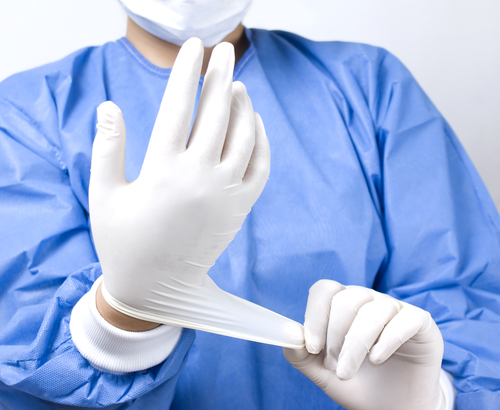In the intricate world of healthcare, where every detail matters, one crucial element often overlooked is the humble medical examination gloves. These unassuming protectors serve as the first line of defense for healthcare professionals, shielding them from potential hazards. However, not all gloves are created equal. Understanding the manufacturing standards and quality control processes behind medical gloves is paramount in ensuring their reliability and effectiveness.
The Evolution of Medical Glove Materials
To appreciate the rigorous standards and quality control involved in medical glove manufacturing, it’s essential to acknowledge the evolution of glove materials. Traditional latex gloves, once the standard, have faced scrutiny due to latex allergies, driving the industry to embrace alternative materials like nitrile.
Nitrile gloves, now widely used, offer a suitable alternative for latex. They are resilient, puncture-resistant, and safeguard against various chemical exposures. These gloves exemplify the importance of adaptability in the industry, as they address the health concerns posed by latex allergies.
Stringent Manufacturing Standards
To meet the demands of the healthcare industry, medical glove manufacturing adheres to stringent standards and guidelines. The Food and Drug Administration in the US sets the bar high, with the Quality System Regulation (QSR) serving as a cornerstone for medical device manufacturing. Manufacturers must comply with Good Manufacturing Practices, ensuring the gloves meet rigorous quality standards.
ISO 13485, ensures that glove production follows a systematic approach, from raw material sourcing to the final product, guaranteeing the highest quality and safety standards.
Quality Control at Every Stage
Medical glove production encompasses several key stages; each monitored with precision. From the selection of raw materials to the final quality assurance, meticulous attention ensures that the gloves serve their purpose effectively.
- Raw Material Inspection: The manufacturing process starts with the scrutiny of raw materials. This is where nitrile or latex, the base materials, are examined for quality. They should be free from contaminants, and their specifications must meet industry standards.
- Glove Formation: The raw materials undergo a transformation process, leading to the creation of glove forms. This stage necessitates precision to ensure the right thickness, elasticity, and comfort.
- Dipping Process: The dipping process involves immersing the glove forms into a solution that solidifies into the glove material. Quality control here involves monitoring the thickness of the coating, evenness, and integrity.
- Leaching and Beading: After the initial glove formation, leaching is performed to remove residues and proteins. Beading, or rolling the cuffs, is essential for ease of donning.
- Quality Assurance Testing: Random sampling of gloves is tested for quality assurance. This includes checks for pinholes, defects, and adherence to specifications.
- Packaging and Sterilization: Once the gloves pass all quality checks, they are packaged and sterilized to ensure they remain free from contamination until use.
The Impact on Sanitizer Travel Kits
As the world faces a rising need for personal hygiene and protection, products like sanitizer travel kits have become essential companions. Medical examination gloves are frequently included in these kits, offering individuals a convenient way to stay safe and germ-free while on the move.
Medical examination gloves within sanitizer travel kits have an even higher threshold for quality and safety. With these kits often used in diverse settings, from travel to healthcare, the gloves must meet not only manufacturing standards but also the rigorous quality control expected in medical environments.
Conclusion: A Glove Beyond Ordinary
Medical examination gloves might appear ordinary, but they are extraordinary in their contribution to healthcare and personal safety. The intricate journey from raw materials to the final product is a testament to the industry’s commitment to quality, safety, and innovation. With stringent manufacturing standards, rigorous quality control, and an eye on sustainability, the medical glove has transformed from a mere accessory to a symbol of safety and responsibility.

